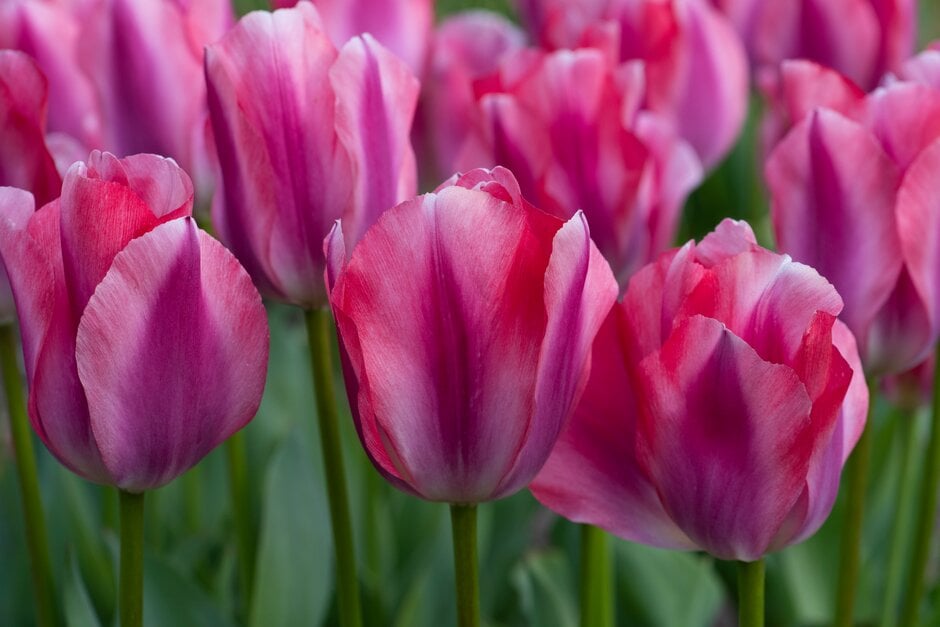Not the plant you're looking for? Search over 300,000 plants
Bulbs
Size
Ultimate height
0.1–0.5 metresTime to ultimate height
1–2 yearsUltimate spread
0.1–0.5 metresGrowing conditions
Chalk
Loam
Sand
Moisture
Well–drainedpH
Acid, Alkaline, NeutralColour & scent
| Stem | Flower | Foliage | Fruit | |
| Spring | Purple Pink | Green | ||
|---|---|---|---|---|
| Summer | ||||
| Autumn | ||||
| Winter |
Position
- Full sun
- Partial shade
Aspect
East–facing or South–facing or West–facing
Exposure
Sheltered Hardiness
H4Botanical details
- Family
- Liliaceae
- Native to GB / Ireland
- No
- Foliage
- Deciduous
- Habit
- Columnar upright
- Potentially harmful
- Harmful if eaten, skin allergen. Wear gloves and other protective equipment when handling. Pets: Harmful if eaten, skin allergen - for further information and contact numbers regarding pets, see the HTA guide to potentially harmful plants
- Genus
Tulipa are bulbous perennials with characteristic flowers, in a wide range of colours, in spring
- Name status
Unresolved
- Horticultural Group
- Fosteriana Group tulips have leaves often marked with purple, and flower in spring with bowl-shaped flowers to 12cm across which may be white, yellow or in shades of red, with a contrasting colour at the base of each tepal
How to grow
Cultivation
Plant 10 to 15cm deep in fertile, well-drained soil with shelter from strong winds and protection from excessive wet. See tulip cultivation
Propagation
Propagate by lifting and separating offsets. See bulb propagation
Suggested planting locations and garden types
- City and courtyard gardens
- Cottage and informal garden
- Patio and container plants
- Cut flowers
- Flower borders and beds
Pruning
Deadhead after flowering; allow foliage to die down naturally
Pests
May be susceptible to slugs, aphids and stem and bulb eelworm; squirrels may eat the bulbs
Diseases
May be susceptible to tulip fire and bulb rot in poorly drained soil
Get involved
The RHS is the UK’s gardening charity, helping people and plants to grow - nurturing a healthier, happier world, one person and one plant at a time.
